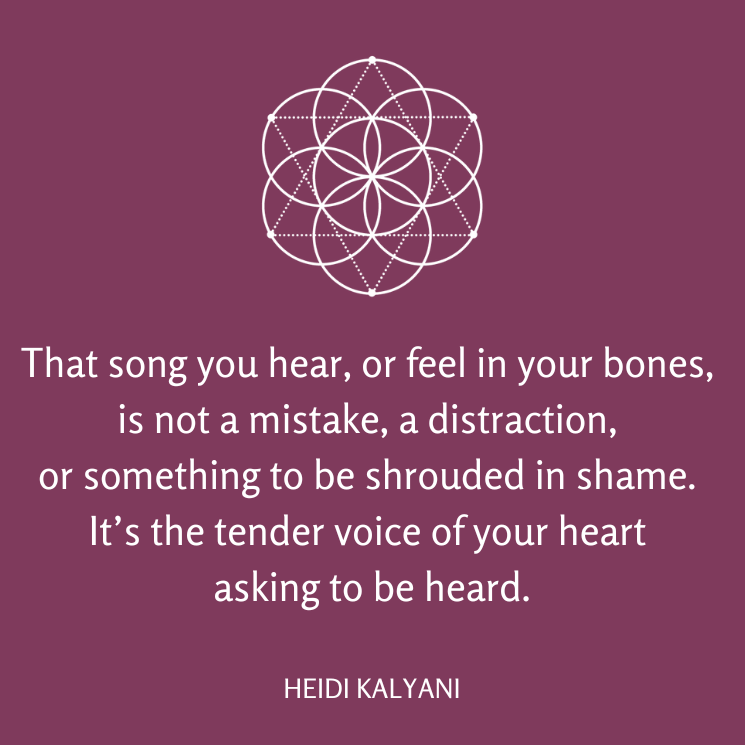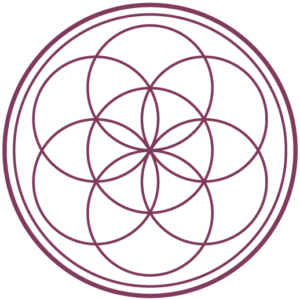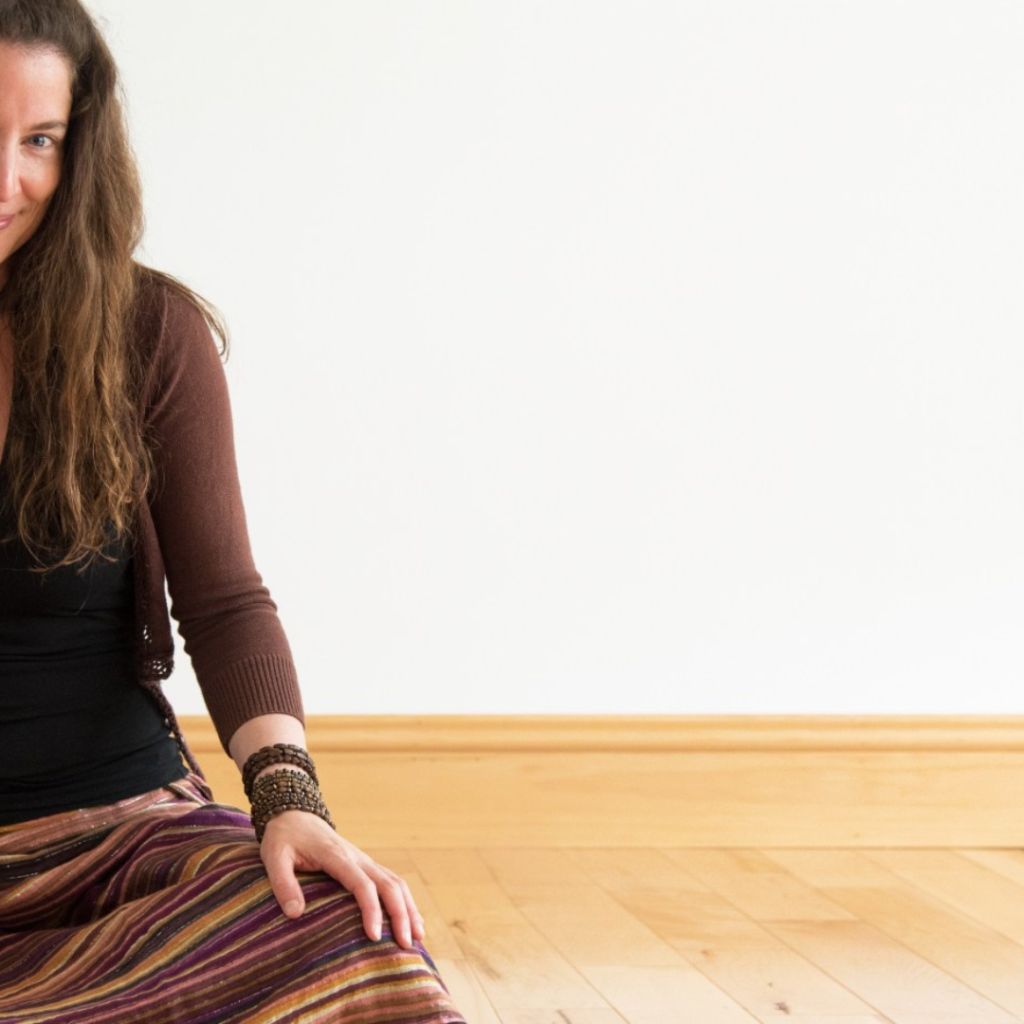
Hi. I’m Heidi.
Facilitator, trainer, designer and
architect of heart•space.
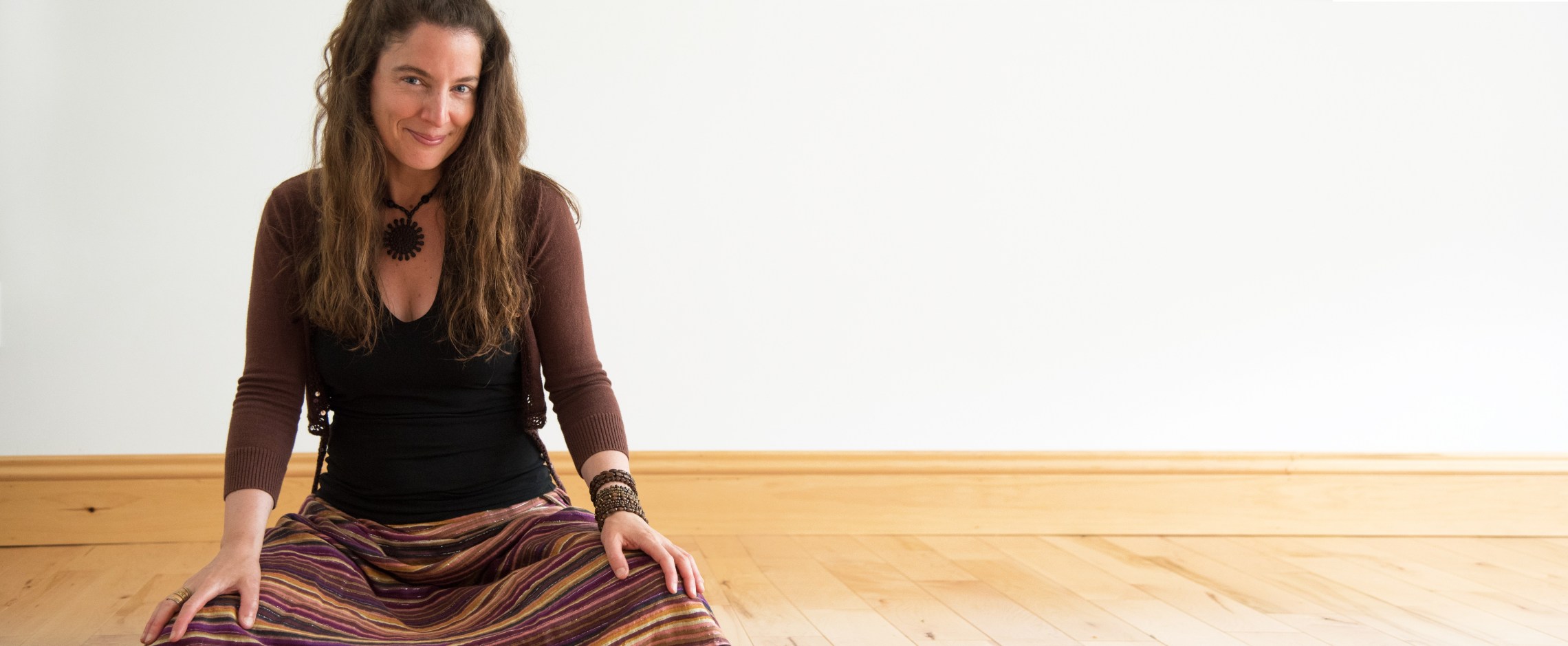
Hi. I’m Heidi.
Facilitator, trainer, designer and
architect of heart•space.
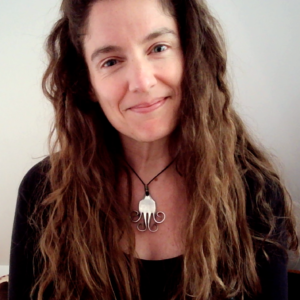
My Story
How I became an architect of heart•space
I was nine when I realized that social interactions caused me pain. I could feel it in my gut, my shoulders, my throat. And in my heart.
For a long time, I thought it was my fault, or that I was somehow flawed for feeling everything so deeply, for finding things too fast, too loud, too harsh, and too unpredictable.
The shushing and shaming I so often received when I spoke up confirmed my inner judgements of being unworthy and flawed. “You’re too sensitive.” “Stop exaggerating.” “It can’t be that bad.”
That summer, dangling from my beloved wooden swing under a shady backyard tree, I vowed to do everything I could to bring people together in healthy, compassionate ways.
And I did.
For decades.
I devoted myself to activism, art-making, teaching, and community building. I wrote. I spoke. I advocated. I facilitated and taught. I questioned. I experimented. I listened. I learned. I gathered people together — my way. And I gave. And gave. And gave… Until I crashed. Hard.
Nervous-breakdown-hard.
After years of giving and giving and giving, skipping meals, working late, losing sleep, ignoring friends, pushing down signs of unresolved trauma, and juggling flaming torches, I was exhausted, overwhelmed and alone.
Connection and protection
Though I have always known that we are wired for connection, I didn’t yet know that trauma — both incident-specific and cumulative — rewires us for protection.
The more my world was coloured through a lens of trauma-related hyper-vigilance and protection the more intolerable “traditional” social interactions became, and the more my ability to create powerful spaces for healing, exploration, creativity, and connection shrank.
I was too dysregulated to co-regulate others, and I was afraid of causing harm in my well-meaning but exhausted attempts to ease some of the pain in the world.
In the deep healing, soul-searching and re-thinking that followed, I began to realize that there are many of us who are especially vulnerable to burnout and overwhelm. And there are many more of us who have been touched by trauma than I ever could have imagined.
I could see that in order to be the welcoming, compassionate, co-regulating presence I wanted to be, I needed a strong yet flexible structure and a set of simple, effective tools and practices.
“What if I’m not too sensitive, but the common ways we’ve been conditioned to interact are too insensitive?”
Inspired by these realizations, I dedicated myself to finding a solution. I began mining the jewels of my decades of mindfulness, holding space and group facilitation experience, and digging deeper into practices that cultivate flexibility, resilience and nervous system regulation.
A new model called heart•space
As I began implementing this re-imagined way of facilitating social interactions (meetings, classes, groups, 1-1 sessions etc.), I experienced three powerful shifts:
- LESS BURNOUT — I felt my energy, passion and vitality begin to return
- LESS HARM — I became kinder, more patient and compassionate with myself and others
- MORE IMPACT — I started making a bigger difference in the world with less effort
The architecture of heart•space combines mindful flexibility, emotional agility, and nervous system regulation with trauma-aware empowerment and predictability for a warm, welcoming, embodied approach to facilitation — for both facilitators and the people we serve.
In my experience, effective, long-lasting change requires presence, small consistent steps, powerful tools, and the support of others who have been there.
If you would like to build healthy, impactful, trauma-aware spaces, I would be honoured to be your guide!
with love,
Heidi
My Story
How I became an architect of heart•space
I was nine when I realized that social interactions caused me pain. I could feel it in my gut, my shoulders, my throat. And in my heart.
For a long time, I thought it was my fault, or that I was somehow flawed for feeling everything so deeply, for finding things too fast, too loud, too harsh, and too unpredictable.
The shushing and shaming I so often received when I spoke up confirmed my inner judgements of being unworthy and flawed. “You’re too sensitive.” “Stop exaggerating.” “It can’t be that bad.”
That summer, dangling from my beloved wooden swing under a shady backyard tree, I vowed to do everything I could to bring people together in healthy, compassionate ways.
And I did.
For decades.
I devoted myself to activism, art-making, teaching, and community building. I wrote. I spoke. I advocated. I facilitated and taught. I questioned. I experimented. I listened. I learned. I gathered people together — my way. And I gave. And gave. And gave… Until I crashed. Hard.
Nervous-breakdown-hard.
After years of giving and giving and giving, skipping meals, working late, losing sleep, ignoring friends, pushing down signs of unresolved trauma, and juggling flaming torches, I was exhausted, overwhelmed and alone.

Connection and protection
Though I have always known that we are wired for connection, I didn’t yet know that trauma — both incident-specific and cumulative — rewires us for protection.
The more my world was coloured through a lens of trauma-related hyper-vigilance and protection the more intolerable “traditional” social interactions became, and the more my ability to create powerful spaces for healing, exploration, creativity, and connection shrank.
I was too dysregulated to co-regulate others, and I was afraid of causing harm in my well-meaning but exhausted attempts to ease some of the pain in the world.
In the deep healing, soul-searching and re-thinking that followed, I began to realize that there are many of us who are especially vulnerable to burnout and overwhelm. And there are many more of us who have been touched by trauma than I ever could have imagined.
I could see that in order to be the welcoming, compassionate, co-regulating presence I wanted to be, I needed a strong yet flexible structure and a set of simple, effective tools and practices.
Inspired by these realizations, I dedicated myself to finding a solution. I began mining the jewels of my decades of mindfulness, holding space and group facilitation experience, and digging deeper into practices that cultivate flexibility, resilience and nervous system regulation.
A new model called heart•space
As I began implementing this re-imagined way of facilitating social interactions (meetings, classes, groups, 1-1 sessions etc.), I experienced three powerful shifts:
- LESS BURNOUT — I felt my energy, passion and vitality begin to return
- LESS HARM — I became kinder, more patient and compassionate with myself and others
- MORE IMPACT — I started making a bigger difference in the world with less effort
The architecture of heart•space combines mindful flexibility, emotional agility, and nervous system regulation with trauma-aware empowerment and predictability for a warm, welcoming, embodied approach to facilitation — for both facilitators and the people we serve.
In my experience, effective, long-lasting change requires presence, small consistent steps, powerful tools, and the support of others who have been there.
If you would like to build healthy, impactful, trauma-aware spaces, I would be honoured to be your guide!
with love,
Heidi
“What if I’m not too sensitive, but the common ways we’ve been conditioned to interact are too insensitive?”
“Can you teach my staff how to do what you just did?”
The first time I was asked this was immediately after facilitating a workshop that had been full of warmth, openness and deep heart-centred connection. My immediate answer was YES! And then on the drive home, I became less sure… The ask had nothing to do with the mindfulness and inner transformation sessions that made up my public offerings. I had never offered leadership training before.
But as I drove my rusty little VW through the white and green December landscape, I realized that it didn’t matter — the ask wasn’t about WHAT I offered, but about HOW I offered it! And although I had never considered teaching it to others, I definitely had a well-established, very intentional philosophy, style and architecture for facilitating with heart!
Fast forward nearly seven years, and I continue to share heart•space (my model of heart-centred trauma-aware facilitation) with coaches, counsellors, teachers, facilitators, leaders, and change-makers — through presentations, courses, custom trainings, professional development sessions, blueprints and card decks.
I am also passionate about everyday practices that help me build flexibility and resilience, such as yoga, meditation, singing, hiking, cooking and day-dreaming as I drink hot steamy tea. I live in a small house with lots of sunlight and two fuzzy friends (one human and one feline!) in rural Nova Scotia, Canada.
“Can you teach my staff how to do what you just did?”
The first time I was asked this was immediately after facilitating a workshop that had been full of warmth, openness and deep heart-centred connection. My immediate answer was YES! And then on the drive home, I became less sure… The ask had nothing to do with the mindfulness and inner transformation sessions that made up my public offerings. I had never offered leadership training before.
But as I drove my rusty little VW through the white and green December landscape, I realized that it didn’t matter — the ask wasn’t about WHAT I offered, but about HOW I offered it! And although I had never considered teaching it to others, I definitely had a well-established, very intentional philosophy, style and architecture for facilitating with heart!
Fast forward nearly seven years, and I continue to share heart•space (my model of heart-centred trauma-aware facilitation) with coaches, counsellors, teachers, facilitators, leaders, and change-makers — through presentations, courses, custom trainings, professional development sessions, blueprints and card decks.
I am also passionate about everyday practices that help me build flexibility and resilience, such as yoga, meditation, singing, hiking, cooking and day-dreaming as I drink hot steamy tea. I live in a small house with lots of sunlight and two fuzzy friends (one human and one feline!) in rural Nova Scotia, Canada.

What matters to me deep in my heart
(resources I bring to my work)
courage
living by my values and taking inspired action even when things are hard
connection
interacting in nourishing, meaningful, reciprocal ways with self, others, world
compassion
acknowledging the pain in the world and advocating for change
reverence
meeting life, just as it is, with appreciation, awe, intention and tenderness
authenticity
embracing the vulnerability of being fully me and inviting others to the same
inner knowing
honouring the inherent wisdom of my body, heart and nervous system
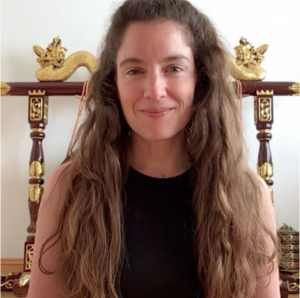
My Story
How I became an architect of heart•space
I was nine when I realized the world was in pain.
I could feel it in my gut, my shoulders, my throat. And in my heart.
That summer, dangling from my beloved wooden swing under a shady backyard tree, I vowed to do everything I could to change it.
And I did.
For decades. I devoted myself to activism, art-making, teaching, and community building. I wrote. I spoke. I advocated. I facilitated and taught. I questioned. I experimented. I listened. I learned. I gathered people together — my way. And I gave. And gave. And gave… Until I crashed. Hard.
Nervous-breakdown-hard.
After years of giving and giving and giving, skipping meals, working late, losing sleep, ignoring friends, pushing down signs of unresolved trauma, and juggling flaming torches, I was exhausted, overwhelmed and alone.
Though I have always known (deep in my bones) that as humans we are wired for connection, what I didn’t yet know is that trauma (both incident-specific and cumulative) rewires us for protection.
The more my world was coloured through a lens of trauma-related hyper-vigilance and protection the more my ability to facilitate powerful spaces for warm, authentic connection shrank.
I was too dysregulated to co-regulate [supporting] others, and I was afraid of causing harm in my well-meaning, but exhausted attempts to hang onto my vow of easing some of the pain in the world.
In the deep healing, soul-searching and re-thinking that followed, I began to realize that there are many of us who are vulnerable to burnout and overwhelm because of our big hearts, sensitivity, and deep compassion. And there are many more of us who have been touched by trauma than I ever could have imagined.
I could see that in order to be the welcoming, compassionate, co-regulating presence I wanted to be, I needed two kinds of support:
- a strong yet flexible structure (with plenty of simple, effective tools and practices)
- a new way of relating to my own self-care
Building heart•spaces
Inspired by these realizations, I dedicated myself to finding a solution. I began researching, studying and experimenting. This included revisiting some of the powerful practices (such as yoga, meditation and singing) that had fallen away at the height of my overwhelm, and mining the jewels of my decades of mindfulness, holding space and group facilitation experience.
It also included learning to navigate some of my biggest struggles, such as my fear of setting boundaries, my tendency to become overwhelmed by empathetic resonance, and my well-intended but destructive coping mechanisms of over-work and people pleasing.
What emerged is a heart-centred, trauma-aware model of facilitation I call heart•space.
The blueprints for heart•space combine mindful flexibility, emotional awareness, nervous system regulation and trauma-aware empowerment and predictability for a warm, welcoming, embodied approach to facilitation — for both facilitators and the people we serve.
If the desire to build healthy, impactful, heart-centered trauma-aware spaces without burning out resonates with you, I would be honoured to be your guide!
with love,
Heidi
